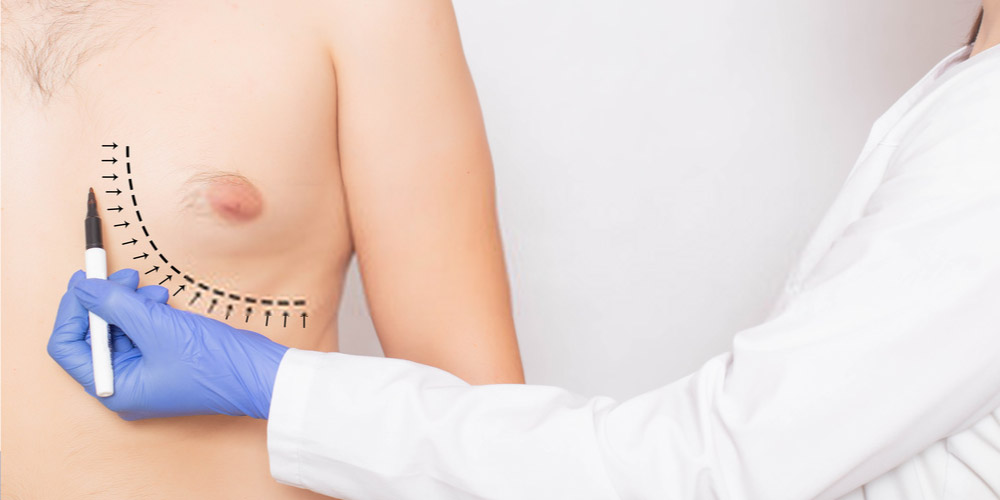Puffy nipples, often a cause for concern and discomfort, can be attributed to various factors such as hormonal imbalances, gynecomastia, or the use of steroids. In many cases, targeted exercise and dietary modifications prove effective in reducing nipple and chest puffiness. However, some instances may require surgical intervention. This article aims to delve into the causes of puffy nipples, exploring lifestyle changes, exercise routines, dietary adjustments, and surgical options for those seeking to address this condition.
Causes of Puffy Nipples:
Enlargement of the breast glands is a common cause of puffy nipples in men. This can be attributed to factors such as low testosterone levels, gynecomastia, or the use of steroids. Identifying the root cause is crucial for developing an effective treatment plan.
Exercise with a Specific Goal:
Targeted chest exercises play a pivotal role in reducing puffiness in the pectoral area. Incorporating exercises like overhead presses, cable crossovers, and various bench presses can help tone and tighten the chest muscles. Customizing a workout plan that includes a variety of chest exercises is essential for maximum impact.
A well-rounded approach involves performing a 20-minute chest workout two to three times per week, gradually increasing frequency and duration as strength improves. It is advisable to include different chest exercises to work on varying muscle groups. Combining these exercises with cardio activities like rowing or swimming can further strengthen the chest muscles.
Changes in Diet:
Dietary modifications can contribute significantly to reducing puffy nipples. A low-fat diet, coupled with mindful eating, can be effective in achieving a leaner physique. Incorporating more fruits and vegetables, eliminating heavily processed foods, and avoiding soy products and grains are key components of a low-fat diet.
For those with hormonal imbalances, adopting a diet high in testosterone and low in estrogen is recommended. Foods such as garlic, ginger, low-fat milk, egg yolks, beans, blueberries, oysters, shellfish, beef, cruciferous vegetables, and macadamia nuts may help boost testosterone levels. However, consulting with a healthcare professional is essential to ensure that the chosen diet aligns with individual needs.
Supplements Made from Herbs:
Herbal supplements, including tribulusterrestris, fenugreek, ginger, and ashwagandha, may contribute to increased testosterone levels. However, it is crucial to note that scientific studies correlating these supplements with a reduction in nipple puffiness are currently lacking. Anecdotal evidence suggests potential benefits, but caution is advised due to potential side effects and interactions with medications.
Procedures Involved in Surgery:
When exercise and dietary changes prove insufficient, surgical options may be considered. Liposuction, mastectomy, and non-invasive fat reduction treatments are some procedures available. Liposuction removes excess breast fat, mastectomy removes breast gland tissue, and non-invasive treatments use freezing, radiofrequency, or laser technology to eliminate fat cells.
In more severe cases of gynecomastia, tissue excision may be necessary to remove glandular tissue or excess skin. The recovery time varies for each procedure, ranging from a few days for non-invasive treatments to several weeks for more invasive surgeries. Insurance coverage may be available for these procedures if they are deemed necessary for overall health.
Consult Your Doctor:
Determining the underlying cause of puffy nipples is crucial for developing an effective treatment plan. A healthcare professional can guide individuals through targeted exercises, dietary changes, and, if necessary, surgical options. It is essential to understand the individual risks associated with supplements and consult a doctor before incorporating them into the treatment plan.
Conclusion:
Addressing puffy nipples in men requires a comprehensive approach, involving targeted exercise, dietary changes, and, in some cases, surgical intervention. The importance of consulting a healthcare professional cannot be overstated, as they can help identify the underlying causes and tailor a treatment plan to individual needs. While targeted exercise and dietary modifications can often yield positive results, surgical options remain a viable solution when these measures fall short. In the quest for a solution to puffy nipples, individuals should prioritize their health, seek professional guidance, and remain consistent in their chosen treatment approach.







